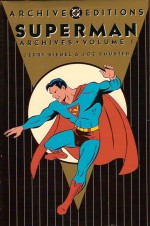
By Chris Claremont, John Byrne, & Terry Austin (Marvel)
ISBN: 0-87135-582-5
Here’s one more slight yet elegant lost treasure from the early days of graphic novel compilations that might amuse and will certainly delight all-out aficionado and neophyte X-fans alike – and perhaps intrigue the odd collector-completist also.
Released in 1989, as Marvel was tentatively coming to grips with the burgeoning phenomena of “trade paperback†collections, this full-colour 48 page compendium collects two supremely impressive issues of Uncanny X-Men (#141-142 from January and February 1980) which perfectly encapsulated everything that made the outrageous outcasts such an unalloyed triumph and touchstone of youthful alienation.
In 1963 The X-Men #1 introduced Cyclops, Iceman, Angel, Marvel Girl and the Beast: very special students of Professor Charles Xavier, a wheelchair-bound telepath dedicated to brokering peace and integration between the masses of humanity and the emergent off-shoot race of mutants dubbed Homo Superior. After years of eccentric and spectacular adventures the mutant misfits disappeared at the beginning of 1970 during a sustained downturn in costumed hero comics as supernatural mystery once more gripped the world’s entertainment fields.
Although their title was revived at the end of the year as a cheap reprint vehicle, the missing mutants were reduced to guest-stars and bit-players throughout the Marvel universe and the Beast was made over into a monster until Len Wein, Chris Claremont & Dave Cockrum revived and reordered the Mutant mystique with a brand new team in Giant Size X-Men #1 in 1975.
To old foes-turned-friends Banshee and Sunfire was added a one-shot Hulk villain dubbed Wolverine, and all-original creations Kurt Wagner, a demonic German teleporter codenamed Nightcrawler, African weather “goddess†Ororo Monroe AKA Storm, Russian farmboy Peter Rasputin, who transformed at will into a living steel Colossus and bitter, disillusioned Apache superman John Proudstar who was cajoled into joining the makeshift squad as Thunderbird.
The revision was an unstoppable hit and soon grew to become the company’s most popular – and high quality – title. In time Cockrum was succeeded by John Byrne and as the team roster shifted and changed the series rose to even greater heights, culminating in the landmark “Dark Phoenix†storyline which saw the death of arguably the book’s most beloved and imaginative character.
In the aftermath team leader Cyclops left and a naive teenaged girl named Kitty Pryde signed up…
In the eponymous ‘Days of Future Past’ Claremont, Byrne & Terry Austin depicted an imminently approaching dystopian apocalypse wherein mutants, paranormals and superheroes have been eradicated by Federally-controlled Sentinel robots, who now rule a shattered world on the edge of utter annihilation. New York is a charnel pit with most surviving mutants kept in concentration camps and only a precious few free to fight a losing war of resistance.
The middle-aged Kitty is the lynchpin of a desperate plan to unmake history. With the aid of telepath named Rachel (eventually to escape that time-line and become the new Phoenix) Pryde swaps consciousness with her younger self in a last-ditch attempt to prevent the pivotal event which created the bleak, black tomorrow where all her remaining friends and comrades are being pitilessly exterminated one by valiant one…
‘Mind Out of Time’ sees the mature Pryde in our era, inhabiting her juvenile body and leading her disbelieving X-Men team-mates on a frantic mission to foil the assassination of US senator David Kelly on prime-time TV by the sinister Brotherhood of Evil Mutants – super-powered terrorists determined to make a very public example of the human politician attacking the cause of Mutant Rights…
Fast-paced, action-packed, spectacularly multi-layered, bitterly tragic and tensely inconclusive – as all such time-travel tales should be – this cunning, compact yarn is indubitably one of the best individual stories of the Claremont/Byrne era and set the mood, tone and agenda for the next decade of mutant mayhem…
An extended edition containing Uncanny X-Men #138-143 and X-Men Annual #4 was released in 2006, but for sheer, swift stripped-down impact this slim 48-page tome is still one of the best slices of X-treme X-citement any fan could possibly crave…
© 1980, 1989 Marvel Entertainment Group, Inc. All rights reserved.









